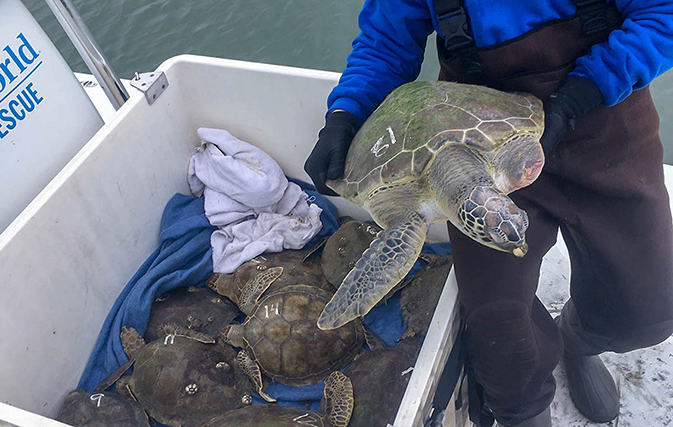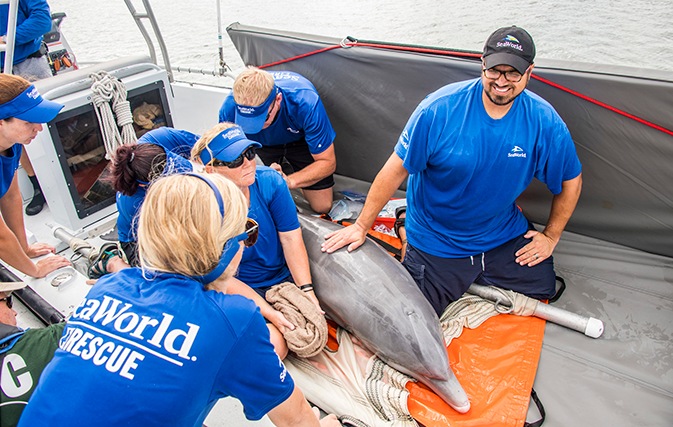TORONTO — There’s a lot more awareness in recent years of SeaWorld’s conservation work. But even the most dedicated SeaWorld fan – or SeaWorld-selling agent – might not realize just how committed SeaWorld is to helping animals across the globe. It’s the company’s mission and SeaWorld says it wants to inspire others to take action and join in its efforts to help save animals and the places they call home.
It’s all part of SeaWorld’s ‘Park to Planet’ ethos, and it’s a driving force behind everything the company does.
“Every day, SeaWorld educates and excites park guests, creating meaningful experiences,” says Travis Claytor, Corporate Director, Communications for SeaWorld Parks.
SeaWorld has been a global leader in marine animal care and welfare, education, conservation, research and rescue for more than five decades. In those years SeaWorld has rescued more than 33,000 animals in need including those that are ill, injured, orphaned or abandoned.
Not surprisingly, the SeaWorld rescue team is on call 24/7, 365 days a year, giving animals – many of them threatened or endangered – a second chance at life. And SeaWorld’s Animal Health and Rescue Center is equipped with state-of-the-art facilities and equipment to provide the best possible care for ill or injured wildlife.
While there’s never a slow week for rescue efforts, this year’s particularly powerful Karenia brevis algae bloom – better known as red tide – has kept the team in high gear.
The Sunshine State’s beloved Florida manatees are herbivores and algae eaters and that makes them particularly vulnerable to red tide.
The first manatee impacted by red tide arrived at SeaWorld in May. Working together with partners including the Florida Fish and Wildlife Conservation Commission (FWC), and as part of the Manatee Rescue & Rehabilitation Partnership, SeaWorld’s critical care facility has taken in 15 red tide-affected manatees to date, while readying supplies and equipment for red tide related rescues and treatment in the coming months. Thirteen of those red tide manatees have survived thanks to their efforts.
Throughout 2018 SeaWorld has helped rescued and cared for 64 manatees. It’s the highest number of manatee rescues ever in a single year – and there are still months to go.
SeaWorld Orlando has also helped close to 2,000 sea turtles over the past 30 years. Last February, the Orlando rescue team returned 17 rehabilitated, endangered sea turtles to the Atlantic Ocean.

Over the past 30 years SeaWorld has helped thousands of sea turtles, which often need help due to ocean pollution including discarded fishing line, hooks and plastic bags. Other challenges facing sea turtles include red tide and ‘cold stun’, a condition that often paralyzes sea turtles during the colder winter months.
2018 © SeaWorld Parks
SeaWorld is taking action in other ways too. Starting in 2011 SeaWorld eliminated the use of plastic shopping bags in the park’s gift shops. The company also recently announced the removal of all single-use plastic drinking straws and coffee stirrers.
SeaWorld is also continuing to invest in more renewable energy, such as the recently launched solar array at Aquatica San Diego, which is expected to generate 80 to 90% of its power from solar energy. SeaWorld also lowered its greenhouse gas emissions by 9% from 2014 to 2017 and improved recycling of waste materials by more than 50% over the same period.
There’s also SeaWorld and Busch Gardens’ education programs, along with its shark conservation partnership with marine artist and conservationist Guy Harvey and a partnership with OCEARCH.
The SeaWorld & Busch Gardens Conservation Fund is a non -profit organization that supports wildlife research, habitat protection, animal rescue and conservation education around the world. Since its creation in 2003, the Fund has granted more than $16.5 million to more than 1,250 projects on all seven continents across the globe.
SeaWorld is all-in with conservation and going strong.
Watch for more SeaWorld coverage in the Nov. 15 and Nov. 29 issues of Travelweek, focusing on recently unveiled attractions for 2018, and what’s coming for 2019.

